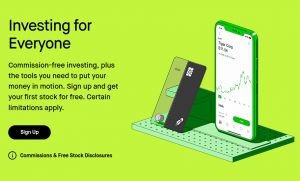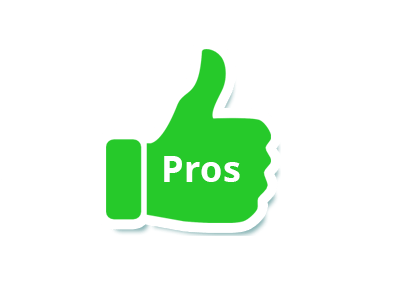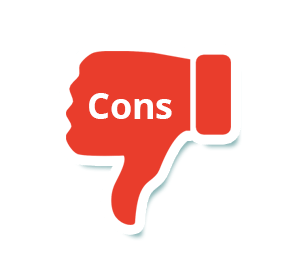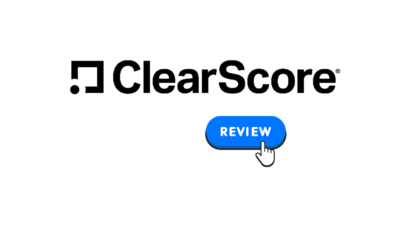Disclosure: Privacy Australia is community-supported. We may earn a commission when you buy a VPN through one of our links. Learn more.
Robinhood Review

Robinhood took the market by storm when it broke ground, knocking other online trading platforms out of the park with their $0 commission fees and user-friendly design.
Other platforms followed suit and eventually the web was filled with similar online trading platforms, giving Robinhood some competition.
Back in 2020, news about the platform exploded, putting it back into the limelight and driving more new investors to see what it was all about.
You’ve probably heard about Robinhood but might not have ever looked into the specifics, which is why we’re here with an in-depth review.
Unfortunately, Robinhood is not available to Australian investors but let’s see how it stacks up to the competition with a look into our detailed Robinhood review.
If you’re looking for a similar investing platform, we always recommend eToro. You can read here more about the features in our in-depth review here.
Table of Contents:
- About Robinhood
- Who is Robinhood for
- Pros & Cons of Robinhood
- An In-Depth Look at Robinhood Trading Platform + Features
- How Does Robinhood Make Money
- Creating an Account with Robinhood
- Robinhood: Yay or Nay
About Robinhood
Robinhood first came to the stage back in 2013, but it wasn’t until 2015 that they really started to take off. Thanks to a cool and user-friendly app and commission-free trades of stocks, ETFs, and cryptocurrencies, they took investors by storm and had seemingly overnight success. They mainly appealed to millennial users, with the average age in 2015 falling right at 26.

In 2021, the platform hit 31 million investors from across the globe and went public in Nasdaq. This was big news after several hardships back in 2020, some of which cost them multiple millions of dollars.
The trading platform has proven to be resistant to issues in the market and continues to surprise investors of all levels with its innovations, improvements, and revenue.
Who is Robinhood for?

Robinhood’s digitized platform with advanced integrations makes it a bit overwhelming for those without a technological background. It’s because of the cool vibes and the emphasis on automation that Robinhood appeals to a younger and more tech-savvy audience.
Despite its modern-day jive, the platform is not opposed to serious investors either, with a little something for them too. Robinhood is the perfect fit for those who are:
- Tech-savvy
- Fans of apps
- Comfortable with automation
- Looking to invest in cryptocurrencies
- Looking for low-cost trading options
- On a budget
Pros & Cons of Robinhood
Just like any other trading platform, Robinhood comes with some advantages and some drawbacks. Knowing what those are is a great way to decide if the platform is right for you, which is why we’re including them here. Check them out and see if the good and the bad make it worth your time.
The Good Stuff

Robinhood is constantly on the map as one of the best platforms for trading and investing for a reason. They offer investors a lot of great incentives to create an account, a few of which we’ve listed below.
Minimal Fees and Costs ✅
A lot of brokers out there overdo it with fees. A fee here and another there results in investors walking away with less than they came with, which is not the point of investing or trading. It’s for that reason that Robinhood is careful when it comes to fees, not tacking on any extras for trades, deposits, or withdrawals. This extends to stocks, ETFs, options, and cryptocurrency, all of which investors can trade for free.
No Account Minimum ✅
Another downside with some investment platforms is the amount needed to open an account and start trading. Some add costly account minimums, some of which are difficult to come up with for many new investors. Robinhood trashed the idea of an account minimum and allows traders to start trading and investing with any amount that fits their budget.
Interactive Interface ✅
The interface is interactive and super easy to use. Everything from market research to buying, selling and trading is accessible in just a few clicks. The website is accessible from any PC and the mobile app is compatible with all mobile devices. Included along with the account are options to configure the user dashboard to trade more efficiently and take advantage of some of the platform’s top protective features.
Fractional Shares ✅
Some stocks are well worth the investment, though they cost quite a bit to get into. Instead of leaving investors on a budget to sit out on the action, fractional shares allow them to buy portions instead. Robinhood offers fractional options, meaning investors could buy as little as one-millionth of a share. That comes in handy when investing in a profitable and popular stock, meaning investors could buy shares with as little as $1.
IPO Access ✅
We mentioned above that Robinhood went public back in July. Before that, investing in the company was reserved for financial institutions and closed off to everyday investors. Now, all members (and even non-members) can take part in the company’s initial public offerings (IPO), investing in the broker and growing along with it.
The Not So Good Stuff

We said that we were going to take a look at the good and the bad. So, now that you know the good things about the broker, let’s take a look at some of the things that are not so good.
Limited Opportunities for Diversification ❌
While stocks, bonds, and other typical investments are great, it always helps to have more options. Two of the options that you won’t find that you could find with other online trading platforms include mutual funds and retirement accounts. These account types are a great way to increase the diversification within a portfolio, allowing traders to benefit from market fluctuations while decreasing the risk that they could experience from going with only one market.
Access to Educational Tools ❌
Seasoned investors might not need too much help when it comes to figuring out the market, but new ones do. There are a few educational resources offered but compared to other trading platforms, Robinhood doesn’t really stand up to the competition. New investors won’t find options for a demo account and won’t find much in terms of webinars and tutorials to learn the ropes.
Customer Care ❌
If you have a question that can be answered by the FAQs, then you’re in good shape. However, if you have anything else holding you back, you might be stuck hunting for an answer longer than you think. They do not add a contact number that’s easy to find and the chatbot is only so sufficient. If you’re looking for brokers that you can chat with at the drop of a hat, Robinhood is not the one.
Reliability ❌
In 2020, Robinhood was fined millions of dollars for its lack of communication with investors. Since then, it’s been difficult for some investors to trust them, with many calling them unreliable. It’s not surprising to take some hits to one’s reputation, especially when exposed in the age of the internet where news (especially bad news) spreads fast. They are still home to many investors that stuck around and have many new ones anxious to sign up.
An In-Depth Look at Robinhood Trading Platform + Features

We took a look at Robinhood and how it started and the pros and cons. Now, let’s dive into the key features of the platform. Here, you’ll get a feel for what it’s like to buy and trade with Robinhood.
The Trading Platform
If you’ve traded before, you’ll recognize a few things about the platform but, realize that others are indeed missing. All of the tools added to the platform are more basic and, for more in-depth analysis, it’s recommended to add an integration. What you will find are basic watch lists, recent news, and a look at some access to basic charts, though you won’t find options to set default orders or customize your web platform.
Research Tools
While Robinhood itself lacks in-depth market analysis tools, they do offer access to Morningstar, a more advanced platform with professional market analysis. An additional third-party tool that’s offered is NASDAQ TotalView, which releases real-time detailed reports from more than 1,700 stocks.
The application offers a few basic charts, including line and volume charts. The desktop version of the has a few more charts to take a look at, though they still don’t offer traders a detailed and in-depth look like some other platforms out there do.
Available Markets
Robinhood is limited when it comes to offerings, one thing that is a downside for some seasoned traders. In terms of diversification, it’s not the best platform out there, as they don’t offer forex and other top markets. However, it’s not the worst or the most limited, with access to the following markets:
- Stocks (long only)
- 6900+ symbols
- Cryptocurrencies (BTC, DOGE, ETH)
- Single and multi-leg options
Order Types
There are some platforms out there that offer all kinds of orders, some of them with options to execute automatically without your interaction. The types of orders that platforms offer are important, as some of them can help keep you from losing too much of your investment in case the market does something unexpected.
Robinhood does not offer conditional orders like stop loss, they only offer market orders and limit orders.
Portfolio Analysis
A lot of online trading platforms offer traders a glimpse at the power of their portfolios. The broker will give detailed info about the value and sometimes make suggestions on how to beef it up a bit. Robinhood offers some assistance with portfolio value, though it only includes a look at real-time balances, margin, and buying power.
Though it’s not the most detailed set of information, investors can use the amount to figure out how their investments are doing and make decisions to hold or sell based on what they see.
Security
These days, online security is critical. Before logging into the app or your account, consider using a VPN to connect securely. Robinhood has some notable security features to keep user’s sensitive data safe, including:
- Two-factor authentication – To log in to Robinhood, you’ll not only need your password, but you can set up the app to use facial or fingerprint recognition or require a custom pin. Consider a password manager when logging into multiple financial accounts, which will alert you if your password has been compromised.
- Unknown device warnings – The app uses not only the IP address but the device ID to recognize logins in an attempt to provide an additional layer of security. When you use a new device that is not yet recognized, you’ll have to verify that it’s you, using a 6-digit code sent via text message or secured email.
- Securities Investor Protection Corporation (SIPC) – In the world of sensitive data, the SIPC is there to help secure both customers and businesses with advanced security measures. Robinhood is a member of SIPC, which means that your accounts will be protected up to $500,000. Though they do not have any additional insurance with SIPC, they do offer some sense of account security.
- Incidence Reports – In an attempt to fully document incidents and prevent future ones from happening, Robinhood reports data breaches. The last incidence of a data breach involving Robinhood was in 2020, which affected 2000 customer accounts. They have not had one since and continue to monitor their security to keep themselves and their customers safe.
Customer Service
When you want to get a hold of a live person at Robinhood, you’re going to have some trouble. Part of the reason is the fact that there is no phone number listed, and only forms that you can fill out for a callback. To get answers to your questions or concerns, you can do any one of the following:
- Check out the FAQs on the main website
- Strike up a Robo-convo with Robinhood’s chatbot
- Head to social media and shoot them a message
- Fill in a callback or email back form
Typically, it doesn’t take them more than 24 hours to get back to members, though the wait time is unpredictable if something big is happening in the market.
How Does Robinhood Make Money?
You know what they say, nothing in life is free! That’s why an important question to inquire when choosing an online trading platform is how they make their money. The way that platforms structure their income is significant for a trader, as some choose to add brokerage fees and other account costs and others go for interest.

Robinhood makes its money and stays in business using the following financial structure.
Collecting Interest
Interest is a profitable thing, especially if you’ve got a lot of customers adding money into an account. Robinhood doesn’t use your invested money though, they use uninvested cash and deposit that into interest-collecting accounts.
Order Flow
It’s not apparent but a lot of brokers make money from order flows, known as payment for order flow (PFOF). When other markets direct customer equity elsewhere, Robinhood scoops up the profit, and this one seems to be one of their biggest moneymakers.
Stock Loans
When Robinhood loans funds for the purchase of stock, they collect all of the profits made and do not share it. Some brokers structure things differently, allowing the traders to collect off of the positive difference.
Margin Interest
If there is one area within the market that Robinhood is the most competitive, it’s with margins, which are only offered to those enrolled in the Gold Program. Because their rates are lower, more investors flock to them to invest with margins, which they wind up collecting revenue from overtime.
Creating an Account with Robinhood
If, after reading the pros and cons you’re ready to sign up for an account, the process is simple, and you’ll be on your way to making your first trades in no time. Below, we’ll break down the steps to get started plus discuss all the things you need for a smooth process.
What you Need:
- Your social security number (SSN)
- Funds to open your account
- A mobile device with the app up and ready to go
Step 1: Create your Account
The first step to signing up is the easiest, requiring you to head over to the home page and click ‘Sign Up.’ The information required is very basic, including your name and email address, along with the username a password you prefer to use. You can use this to sign up on the web or the app, so make sure to remember your credentials for future logins.
Step 2: Provide your Info
The step that follows requires you to get a bit more personal, which is why you should use a secure browser before sharing any personal info. The first section is contact information, which will include your home address and your phone number. Once you’re done there, they will ask more in-depth questions like your SSN, your citizen status, marital status, and your date of birth. Because you must provide your tax information to trade with Robinhood, they will also ask that you note dependents and that you provide your employment status too.
Step 3: Add Some Funds
Once all of that stuff is out of the way, you’ll need to add some funds. While you can skip this part if you want, you can always get it over with so that you can log in to the app and start learning the ropes quickly. You’ll first have to fund your account using a bank account, as Robinhood does not allow the use of debit or credit cards at this time. Remember, you can add any amount you like and, once your application is approved, you can add more if you need to.
Step 4: Submit your Application
Even though you’ve provided information, Robinhood still takes some time to review the information and either approve or decline the application. The process could take 24 hours, though you might have an answer much faster. There are three things that can happen when you submit your application.
- You’re Approved! – If you’re approved, you can log in and start using the app to add more funds and/or make trades.
- More Info is Needed – If Robinhood needs additional details about you or any of your information, you’ll get a request for that information to complete the process.
- It’s Declined – Robinhood maintains the right to decline an application without having to give applicants a reason. It’s a possibility and, if it declines, you might have to wait a bit to reapply.
Step 5: Start Trading!
It’s exciting to have access to a trading platform, especially one that offers so much to investors of all levels. While you can now start trading, it’s still recommended that you take some time to get a feel for the platform before you start investing and/or trading. Getting into the market too fast comes with a long list of disadvantages, even if beginner’s luck is on your side. Make sure that before you trade, you check out:
- All stocks and their current prices
- The market and the trends as of late
- Charts and other analyses of the stocks you’re interested in
- Your budget
- Any costs for buying, selling, or trading
Robinhood: Yay or Nay?
If you’re a seasoned investor, we think that there are much better platforms out there. Not only because you can expand your portfolio but because you’ll have access to advanced tools and more complex markets.

If you’re a new investor, Robinhood could be your best bet. Not only do they waive the required minimum account balance, but they also do away with all charges, including brokerage fees, subscriptions fees, and banking fees.
Robinhood checks all of the right boxes when it comes to usability, with the desktop trading platform and the mobile app trading platform working like a charm. Despite its dealings with accounts over the past year, Robinhood has proved that they are tough enough to deal with whatever comes their way and have handled all the fine details with poise.
Now, it’s up to you to make up your mind about Robinhood. If you’re looking for a trading platform without all of the complicated hassles, it could be the one for you. While it’s not the best for seasoned investors, it could help newbies get a competitive edge before they take off and start investing in more complicated markets.
You Might Also Like:




